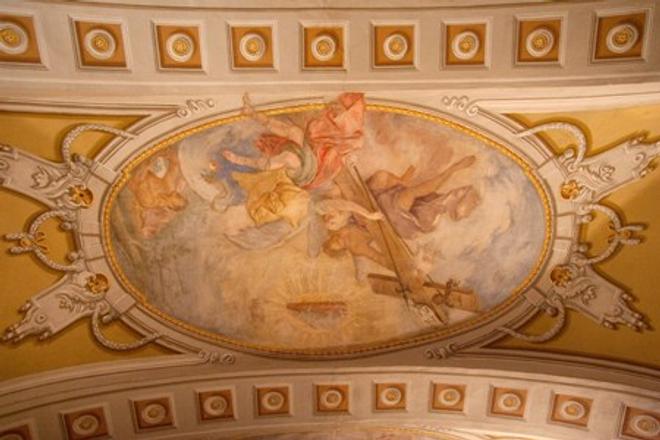BETWEEN September 14 and 23, Slovaks were able to enjoy lectures, guided tours, and events about lesser-known historical and cultural monuments. This year, Slovakia participated in European Heritage Days /Dni európskehi kultúrneho dedičstva – an event aimed at focusing the attention of the wider public to extraordinary values of colourful cultural heritage in 50 participating countries. In Slovakia, several places either organised special events for this occasion, offered free entry, or opened the otherwise closed doors of monuments.
In the capital, secular buildings and sites were opened on the morning of Saturday, September 16, while Christian monuments were opened in the afternoon. Jewish monuments (Synagogue in Heydukova, Chatam Sofer Mausoleum, and the Orthodox Cemetery) were opened on the Sunday. Saturday morning’s attractions included The Art-Nouveau Secondary Grammar School in Groesslingova, the castle palace at Bratislava castle, and burghers’ houses in Panská Street, which were not opened in the end due to the reluctance of their owners and tenants and offered only a guided tour of their facades. In the afternoon, people queued to get the chance to see the interior of the tower of St Martin’s Cathedral, St Catherine’s Chapel in Michalská Street, the Corpus Christi Chapel in Panská and the St James’ / St Jacob’s Chapel in the SNP square, discovered thanks to archaeological research.
St Catherine’s Chapel, the oldest chapel still standing in Bratislava, which dates back to the beginning of the 14th century, used to be open to the public almost every day, then only before and after regular masses, and finally closed altogether. The Chapel Corpus Christi has been used by the Jesuit order since the 16th century (before that it was very probably a burgher house but restoration and archaeological research have not been completed yet) and it is not normally open for visitors.
As both sites, as well as the tower of St Martin’s Cathedral, were under siege by eager Bratislavans – and maybe even Bratislava visitors – perhaps it would be possible to open these monuments at least several times a year, collect some symbolic admission fee to help restore them, and create some information bulletins and remunerate guides. After all, these monuments are too old, too precious, their restoration and preservation too costly (and financed from the money of all taxpayers and well as from visitors’ fees collected by tourist sites in Slovakia) to serve just a few people or a few purposes and wait silently for gradual decay (or low-key restoration). They are close to Slovaks’ hearts and their importance is too big, as this year’s European Heritage Days have shown, to be kept in a secret, underground existence. It turned out that the public (at least in Bratislava, but perhaps also in other places in Slovakia) do not have to be alerted to be aware of local monuments and sites, and it rather seems that the demand vastly exceeded the offer.



 (source: Sme - Tomáš Benedikovič)
(source: Sme - Tomáš Benedikovič)